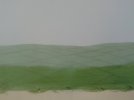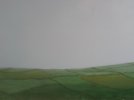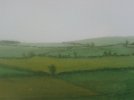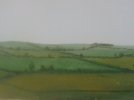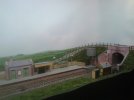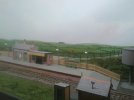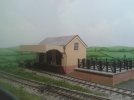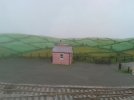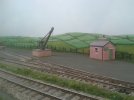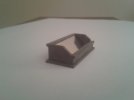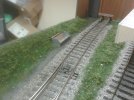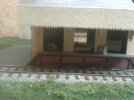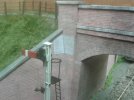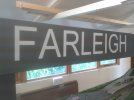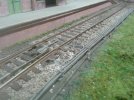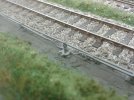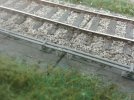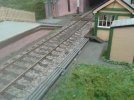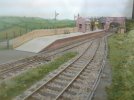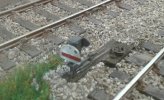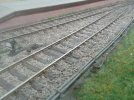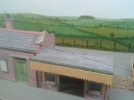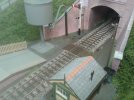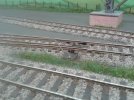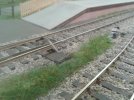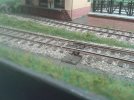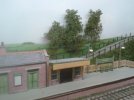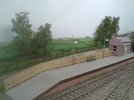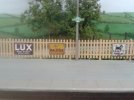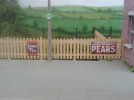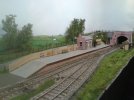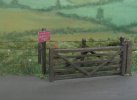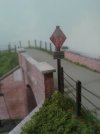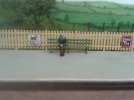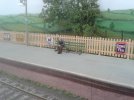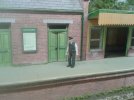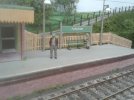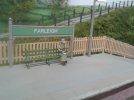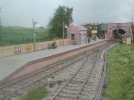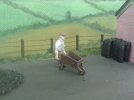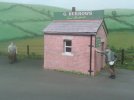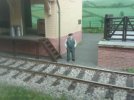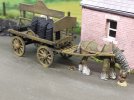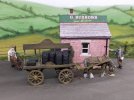Having put off all thoughts of painting the backscene, I finally decided 'to take the bull by the horns' and make a start. I had previously bought a fifteen feet roll of canvas from an art shop. I estimated that I would need approximately nine feet so this was cut from the roll and nailed to a wall inside the shed. A pencil line was drawn along the canvas at the required height to match the height of the rear scenic boards. I armed myself with various cheap tubes of acrylic paint and made a very thin wash of cerulean blue. I quickly applied the wash to the canvas using a household paint brush. As the acrylic paint began to dry I wondered if it was possible to use a similar technique to that used in watercolour painting to depict clouds. I screwed-up a ball of kitchen roll and dabbed at the blue paint and was pleased to find that the technique also worked with acrylics. The kitchen roll removed the paint to reveal the white canvas beneath. It is possible to make quite pleasing clouds by this method. I touched in some runny mauve paint at the bottom of each cloud on the right side, the sun being imagined to be on the left. A small dab of cadmium yellow was applied to the top left side to represent the sunlight bouncing off the tops of each cloud. Unfortunately, the photos taken under the shed lights look rather drab and do not give a true reflection of the actual colour. However, if you look closely it is possible to make out the cloud formation.
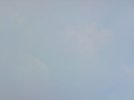
As the layout is set in south-east England, I wanted gently rolling hills in the distance. I walked down the length of the canvas with a 2H pencil to draw the wavy horizon line. Next, I applied a wash of sap green to the land mass from the horizon to the lower edge of the canvas. The lower 2cm will be hidden behind the baseboard frame. When dry, I mixed up a lighter green using sap green and titanium white. This was applied to the horizon line to a depth of about two inches. This was all very experimental at this stage. I was basically hoping that all would come good in the end! I hasten to add that I have no experience of painting scenes in acrylics and have only dabbled in watercolours, with no great success. Needless to say, John Constable's reputation as a leading exponent of painting rural scenes is not under any threat by yours truly!
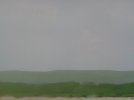
Terry

As the layout is set in south-east England, I wanted gently rolling hills in the distance. I walked down the length of the canvas with a 2H pencil to draw the wavy horizon line. Next, I applied a wash of sap green to the land mass from the horizon to the lower edge of the canvas. The lower 2cm will be hidden behind the baseboard frame. When dry, I mixed up a lighter green using sap green and titanium white. This was applied to the horizon line to a depth of about two inches. This was all very experimental at this stage. I was basically hoping that all would come good in the end! I hasten to add that I have no experience of painting scenes in acrylics and have only dabbled in watercolours, with no great success. Needless to say, John Constable's reputation as a leading exponent of painting rural scenes is not under any threat by yours truly!

Terry

